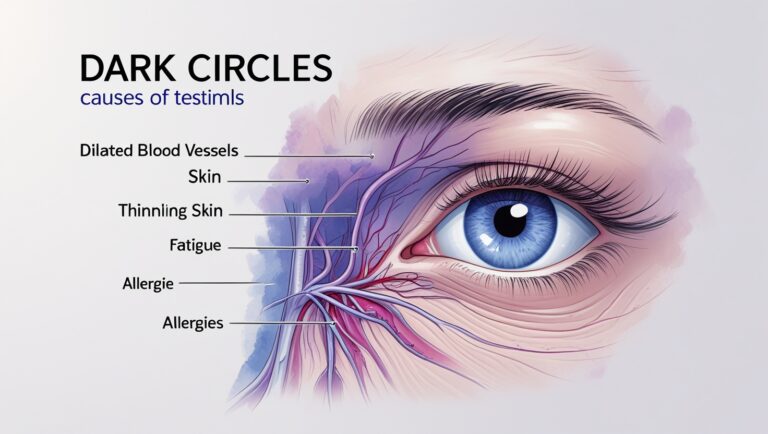Table of Contents
- Introduction
- What Is Belly Pain?
- Common Causes of Belly Pain
- When Belly Pain Is Serious: Key Warning Signs
- Real-Life Examples of Belly Pain and What to Do
- Children and Belly Pain: What Parents Should Know
- Belly Pain During Pregnancy
- Tests Doctors Use to Diagnose Abdominal Pain
- First Aid and Home Remedies for Mild Belly Pain
- Mistakes to Avoid When Managing Belly Pain
- Lifestyle Tips to Prevent Belly Discomfort in 2025
- Conclusion and What to Do Next
1. Introduction
We’ve all felt that uncomfortable twist in our gut at some point. Belly pain (or abdominal pain) is one of the most common health complaints. Sometimes it’s something simple like gas or indigestion. Other times, it’s a red flag your body is waving to say something more serious is going on.
In this guide, you’ll learn how to tell the difference between harmless tummy troubles and conditions that need medical attention. We’ll cover causes, symptoms, home remedies, and when to see a doctor—all explained in simple, friendly language that makes health easy to understand.
2. What Is Belly Pain?
Belly pain refers to discomfort or ache anywhere between your chest and groin. It might feel:
- Crampy
- Sharp or stabbing
- Dull and achy
- Burning or bloated
The location, intensity, and duration can all offer clues about what’s causing it.
3. Common Causes of Belly Pain
Indigestion and Gas
- Often happens after overeating or eating spicy/greasy foods
- Feels like bloating, burping, or gurgling
What helps: Walking, antacids, warm water, and avoiding trigger foods
Constipation
- Difficulty passing stool or going less than 3 times a week
- Can cause lower abdominal discomfort and bloating
What helps: High-fiber diet, water, mild exercise, over-the-counter stool softeners
Stomach Flu and Infections
- Caused by viruses or bacteria
- Often includes diarrhea, vomiting, and fever
What helps: Hydration, rest, and sometimes antibiotics if bacterial
Food Poisoning
- Caused by contaminated food or drink
- Rapid onset of nausea, vomiting, cramps, and diarrhea
What helps: Hydration, avoid solid food until symptoms ease, seek help if it lasts more than 2 days
Irritable Bowel Syndrome (IBS)
- A chronic digestive condition
- Symptoms include cramping, gas, bloating, and alternating constipation/diarrhea
What helps: Stress management, low-FODMAP diet, prescribed medications
Menstrual Cramps and Ovulation Pain
- Common in menstruating women
- Pain typically occurs in lower abdomen or back
What helps: Heat packs, gentle movement, pain relievers
Ulcers and Acid Reflux
- Burning pain, often worse on an empty stomach
- May feel better temporarily after eating
What helps: Avoiding spicy foods, antacids, medical treatment if persistent
Gallstones and Kidney Stones
- Sharp, intense pain that comes and goes
- May radiate to the back or groin
What helps: Pain management, medical imaging, possible surgical removal
Appendicitis
- Begins near the belly button and shifts to the lower right abdomen
- Usually accompanied by fever, nausea, and loss of appetite
What to do: Go to the emergency room immediately
Hernias
- Occur when part of an organ pushes through abdominal muscle wall
- Pain worsens with movement or lifting
What helps: Diagnosis by a doctor, may require surgery
4. When Belly Pain Is Serious: Key Warning Signs
You should see a doctor right away if you experience:
- Severe or worsening pain
- Pain lasting more than 24–48 hours
- Blood in vomit or stool
- Unexplained weight loss
- Fever with abdominal pain
- Persistent nausea or vomiting
- Swelling or a hard belly
5. Real-Life Examples of Belly Pain and What to Do
Example 1: You eat a heavy meal and feel bloated with burping and discomfort.
- Likely cause: Indigestion
- What to do: Drink warm water, walk, and avoid fatty food next time
Example 2: You have stabbing pain in your lower right side with nausea.
- Likely cause: Appendicitis
- What to do: Seek immediate medical help
Example 3: You experience monthly cramps around your period.
- Likely cause: Menstrual cramps
- What to do: Use a heat pad, OTC pain relievers, and track your cycle
6. Children and Belly Pain: What Parents Should Know
- Kids often complain of belly pain, especially during school stress
- Watch for signs like vomiting, fever, refusal to eat, or pain in one specific spot
- If your child can’t walk upright, has a swollen belly, or seems lethargic—see a doctor
7. Belly Pain During Pregnancy
Mild cramping can be normal, especially early on. But call your doctor if you notice:
- Intense or prolonged pain
- Bleeding or spotting
- Dizziness or fainting
- Pain with fever or chills
Better safe than sorry—your OB-GYN is always the right call in these cases.
8. Tests Doctors Use to Diagnose Abdominal Pain
Depending on your symptoms, your doctor might use:
- Blood tests: To check for infection or inflammation
- Urinalysis: To rule out UTIs or kidney issues
- Ultrasound: For gallstones, pregnancy, or appendicitis
- CT scan: Offers a clear picture of abdominal organs
- Endoscopy/Colonoscopy: If ulcers or bowel issues are suspected
9. First Aid and Home Remedies for Mild Belly Pain
- Drink warm water or ginger tea
- Rest and apply a warm compress
- Eat light, bland foods (bananas, rice, applesauce, toast)
- Avoid greasy, spicy, or acidic foods
- Try gentle yoga or walking to relieve gas
10. Mistakes to Avoid When Managing Belly Pain
- Ignoring symptoms for too long
- Taking random medications without guidance
- Using painkillers to mask severe pain
- Skipping meals or eating junk during pain episodes
11. Lifestyle Tips to Prevent Belly Discomfort in 2025
- Eat a balanced, fiber-rich diet
- Stay active with daily movement
- Drink plenty of water
- Manage stress with mindfulness or therapy
- Avoid overusing NSAIDs or alcohol
- Keep a food and symptom journal to identify triggers
12. Conclusion and What to Do Next
Belly pain is common—but not always harmless. By understanding your symptoms and knowing when to see a doctor, you can take charge of your digestive health. Don’t ignore persistent or severe pain. Trust your instincts, and get help when something doesn’t feel right.
Next Steps:
- Monitor symptoms and duration
- Use the tips in this guide to manage minor discomfort
- Schedule a check-up if you have frequent or unclear belly pain
- Share this article to help others stay informed and safe
Listen to your gut—literally. Your health depends on it.
Visit for more :- Greakstive
External References & Further Reading:
- What’s Causing Your Abdominal Pain and How to Treat It
- When to See a Doctor About Stomach Pain
- Abdominal pain








